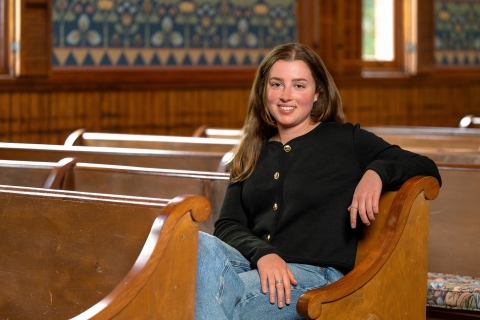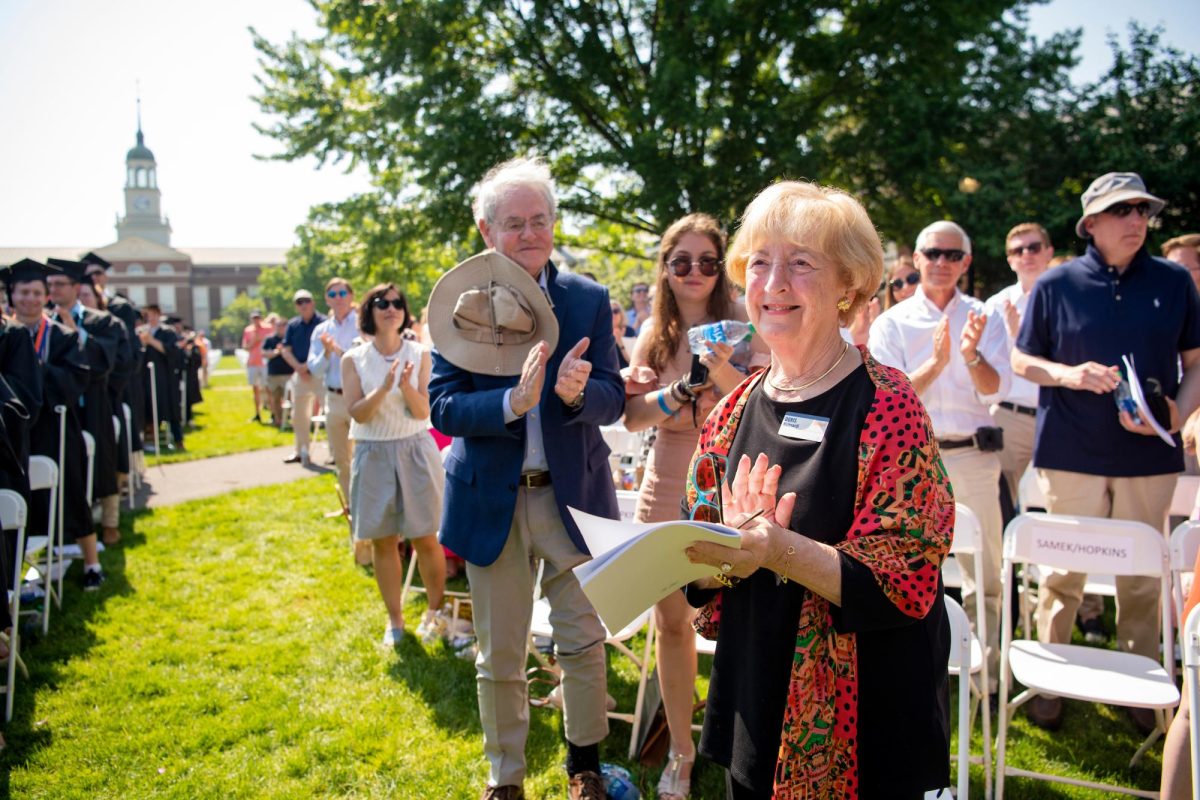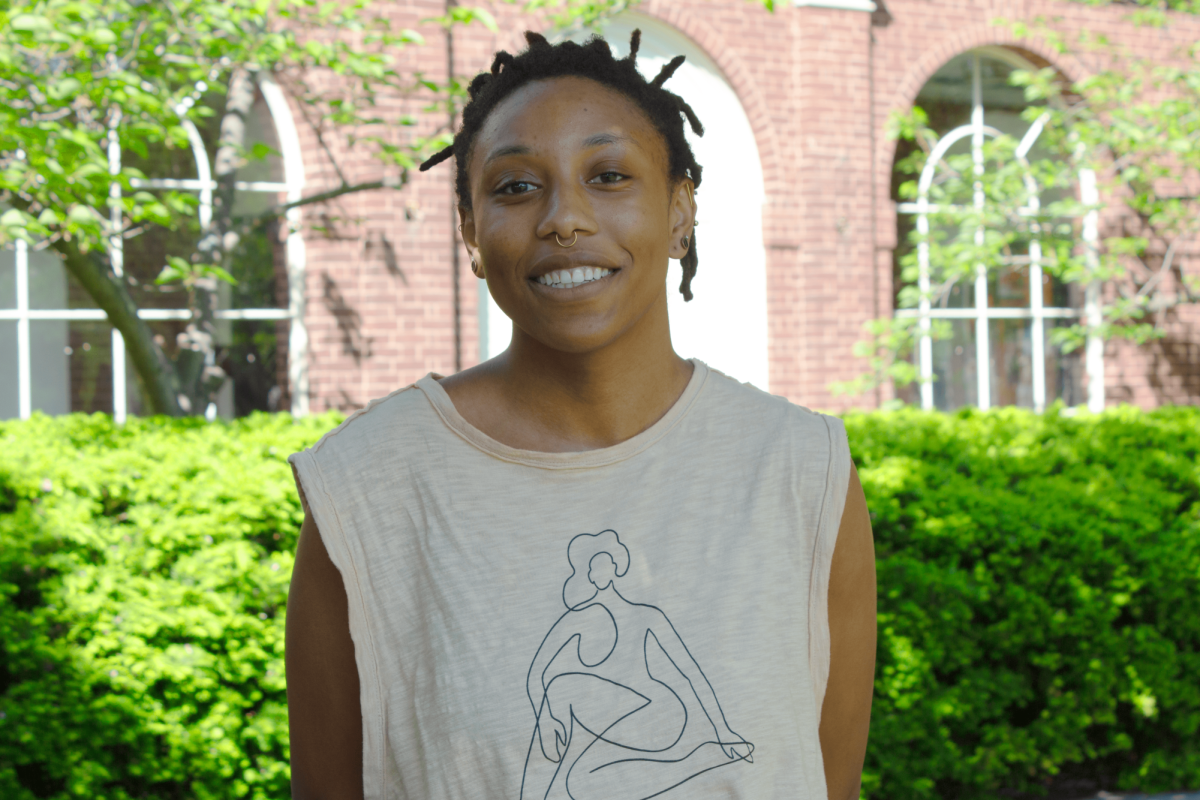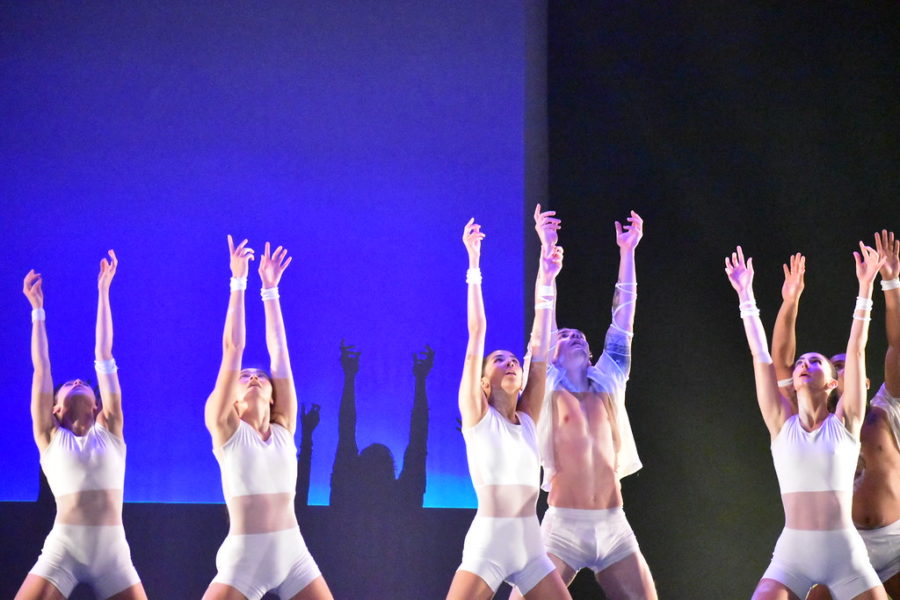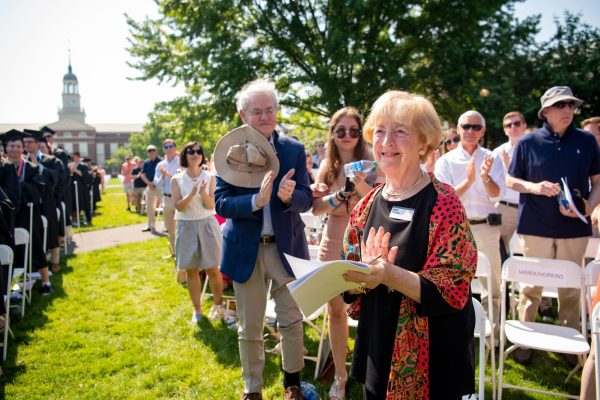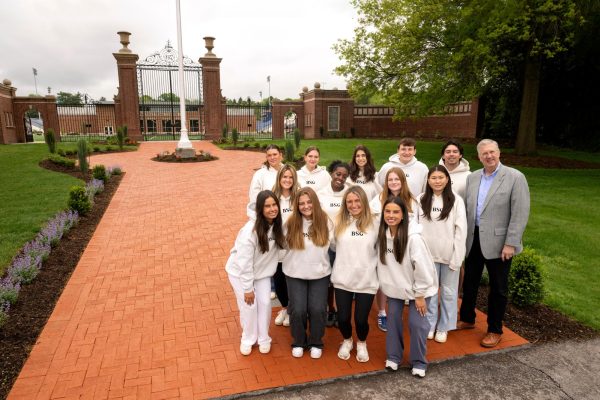Red Sky Performance: Indigenous Contemporary Dance Comes to the Weis Center Stage
September 29, 2021
On Tuesday Sept. 28 the Weis Center for the Performing Arts hosted Red Sky Performance, one of Canada’s leading dance companies of contemporary Indigenous performance. Founded in 2000 by Artistic Director Sandra Laronde of the Teme-Augama-Anishinaabe (People of the Deep Water), Red Sky has traveled to 17 countries and performed close to 3,000 times. Along the way they have won a plethora of awards across nations for their performances, which intertwine dance, theatre, music and media into fascinating creations that highlight the beauty of Indigenous culture. According to their website the company’s mission is “to create inspiring experiences of contemporary Indigenous arts and culture that transform society. We drive our passion forward and elevate Indigenous arts and culture in ways that celebrate, uplift, and respect Indigenous cultures.”
The Weis Center learned about Red Sky through Executive Director Kathryn Maguet who said, “I had the opportunity to see Red Sky at Jacob’s Pillow Dance Festival in the Berkshires a few summers ago and was thrilled by the company’s artistry and athleticism.”
Athleticism is right—Red Sky’s performance Trace, its newest of 16 productions, features impressive stunts, daring throws and incredibly sharp motions, all synchronized to perfection between the seven-person ensemble. Contrasted movements and a sense of organized chaos created an experience that felt both grounded and brought the viewer to another world. Through their performance, this ensemble was able to embody a language that went beyond words.
But so much more goes into Trace than just the stunning choreography. The production heavily pulls inspiration from the sky and star stories of the Anishinaabe, an Indigenous group hailing from the Great Lakes region. By telling these stories through performance, Red Sky aims to “[offer] a glimpse into our origin as well as our future evolution.”
In a short conversation before the show began, Laronde spoke further on the positive effects of sharing Indigenous art. When asked about the most rewarding aspects of bringing Trace to the stage, she said that the audience response is one of the many things that make the show fulfilling, “watching people walk out of a venue after a performance feeling lifted—it’s a shared experience.”
This higher purpose was certainly not lost on the attendees of the show on Tuesday. Audience member and Writing and Teaching Consultant for the University Writing Center Peg Cronin praised the experience, saying, “This piece manifested the relatedness of all life forms going back to our star origins, emphasizing deep connection even as it dealt with violent rupture, such as the government decree forbidding Indian dance.”
The government decree that Peg refers to was a shining moment in the performance, as the words of the decree were projected behind the dancers, emphasizing the attempted stifling of Indigenous culture and art forms. Soon after, the words began to fall away from the screen, “as if the government language was reclaimed by the elements, turning to to snow or falling stars—some kind of cosmic weather under which the dancers reclaimed their tradition,” Peg said.
The combination of media and dance allowed this performance to deliver powerful sentiments on the strength of Indigenous culture. Viewers were left feeling as though they had witnessed a sacred ceremony—a powerful commentary on the interconnectedness of the universe as well as the refusal to suppress Indigenous culture. Red Sky both fiercely and generously permitted audience members to experience the passing down of the Anishinaabe ancestral stories through their performance.
Bringing art from other cultures onto modern campuses is a crucial step in exposing students to the ways and values of different cultures. Performances such as Trace expose us to rich traditions from which we may otherwise remain sheltered from. Such shelter can ultimately cause ignorance of the histories and practices of other groups that we may live near. Much like Red Sky’s company mission, it is important that diversity of all kinds be encouraged, celebrated and respected whenever possible. It is through these acts that negative stereotypes are quelled, understanding of our world is heightened and people of all backgrounds may come together. Additionally, when we open our hearts and minds to the beliefs of others we give ourselves the gift of listening and give others the gift of being heard.
Maguet understands the importance of this cultural appreciation, as it was yet another strong reason for the Weis Center to bring Red Sky to it’s the stage. “I thought this company and this piece in particular was the perfect introduction to contemporary dance through an Indigenous lens for the [University] campus,” she said.
The Weis Center has a fantastic roster of productions visiting the stage for the 2021-2022 season, so be sure to check it out and allow yourself to be open to everything there is to offer.

